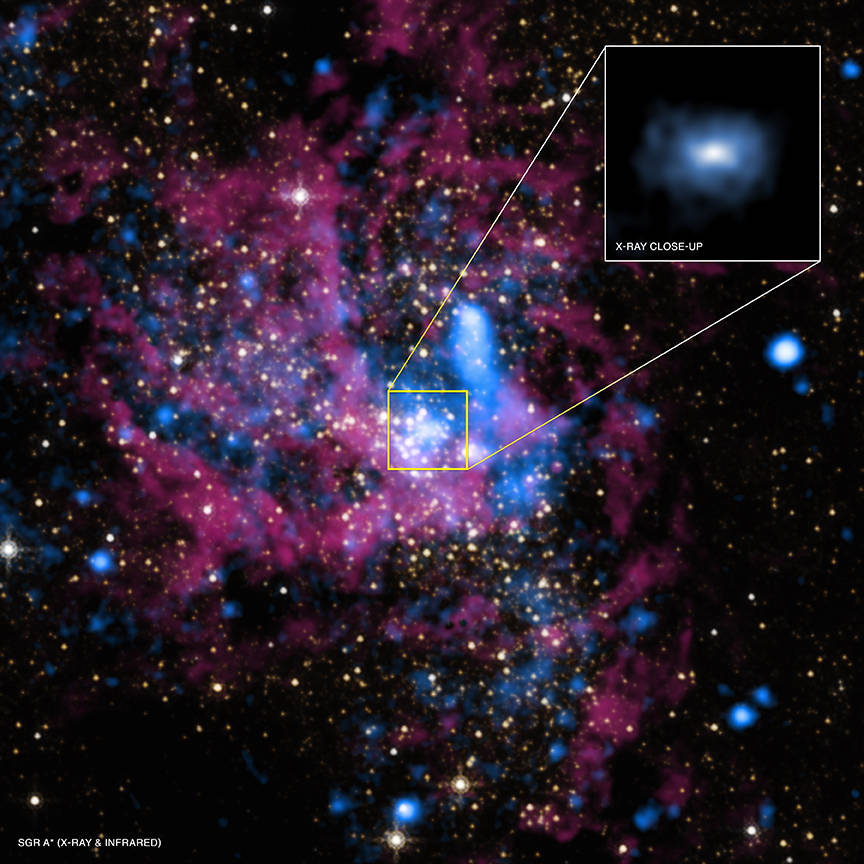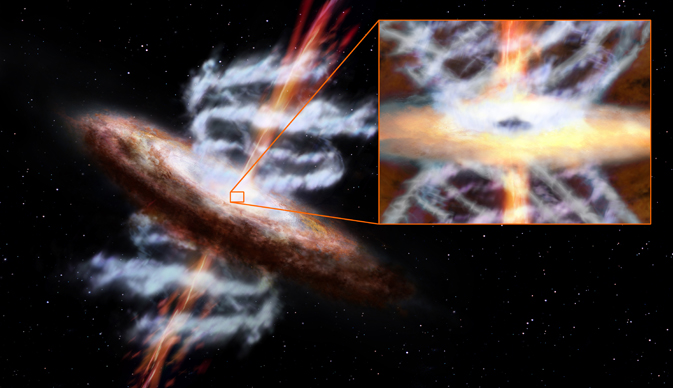Colloquium discusses black holes, outflows and their influence on galaxies
In last Wednesday’s colloquium, ICTP-SAIFR welcomed Rodrigo Nemmen, from the Institute of Astronomy, Geophysics and Atmospheric Sciences (IAG) of USP. The researcher presented some of his latest works with black holes, focusing on some open questions of the area. Among them were featured the impact of black holes in galaxies, the relation between mass and energy behavior and the production of gas outflows discharged by them.
Star formation
Black holes concentrate a large amount of matter in a small region of space. When compared to the Sun’s mass, these astronomical bodies can be from tens to millions of times greater – in the latter case, they are called supermassive. While there are millions of “smaller” black holes scattered throughout a galaxy, there is a supermassive black hole at the center of each one.
Although the mass of a supermassive black hole is huge, its gravitational effect is extremely small – the area in which it can have an effect is approximately one million times smaller than the size of the galaxy. However, studies conducted in the late 90s proved that there is a relation between the mass of these bodies and at least the central region of galaxies, called the bulge. So how can a black hole affect regions beyond the reach of its gravitational effect?
“The influence of black holes in galaxies is indirect,” says Nemmen. “In fact, it is the gas outflows that influence the formation of stars”.
Nemmen explains that some black holes “swallow” gas around them and also expel a much larger quantity and with great force. These outflows heat space as they travel and can reach hundreds of thousands of light years when produced by supermassive black holes. As star formation depends on gas cooling, the outflows interrupt the process and leave galaxies with fewer stars when compared to others where black holes don’t emit outflows.
Outflows
The explanation of how black holes influence in the formation of galaxies raises other questions: how are outflows produced and what is their energy source?
“There is a kind of outflow that has the form of “rays” of particles and that reach speeds very close to the speed of light”, says Nemmen. “These jets are produced when a strong magnetic field interacts with the black hole and force gas to be expelled”.
The magnetic field is also one of the factors responsible for the intensity of the jets. Another important factor, which causes the amount of emitted gas to be greater than the “swallowed” gas, is the rotational speed of the black hole.
“The spin can make the “efficiency” of the black hole to be greater than 100%, sometimes reaching up to 300%,” says Nemmen. “To power the outflows, the rotational speed decreases over time”.
The origin of the magnetic fields that lead to the production of the jets, however, is a question that still remains unanswered.
Energy behavior
Another question that intrigues Nemmen is related to the behavior of black holes: is there a relation between mass and energy returned to the environment? In a phenomenological study conducted with his collaborators, published in Science, the researcher came to an unexpected result.
“We found that, regardless of its size, black holes have the same behavior in terms of energy returned to the environment”, he says. “In the same study, we found that about 10% of the energy of all gas outflows is transformed into radiation”.

